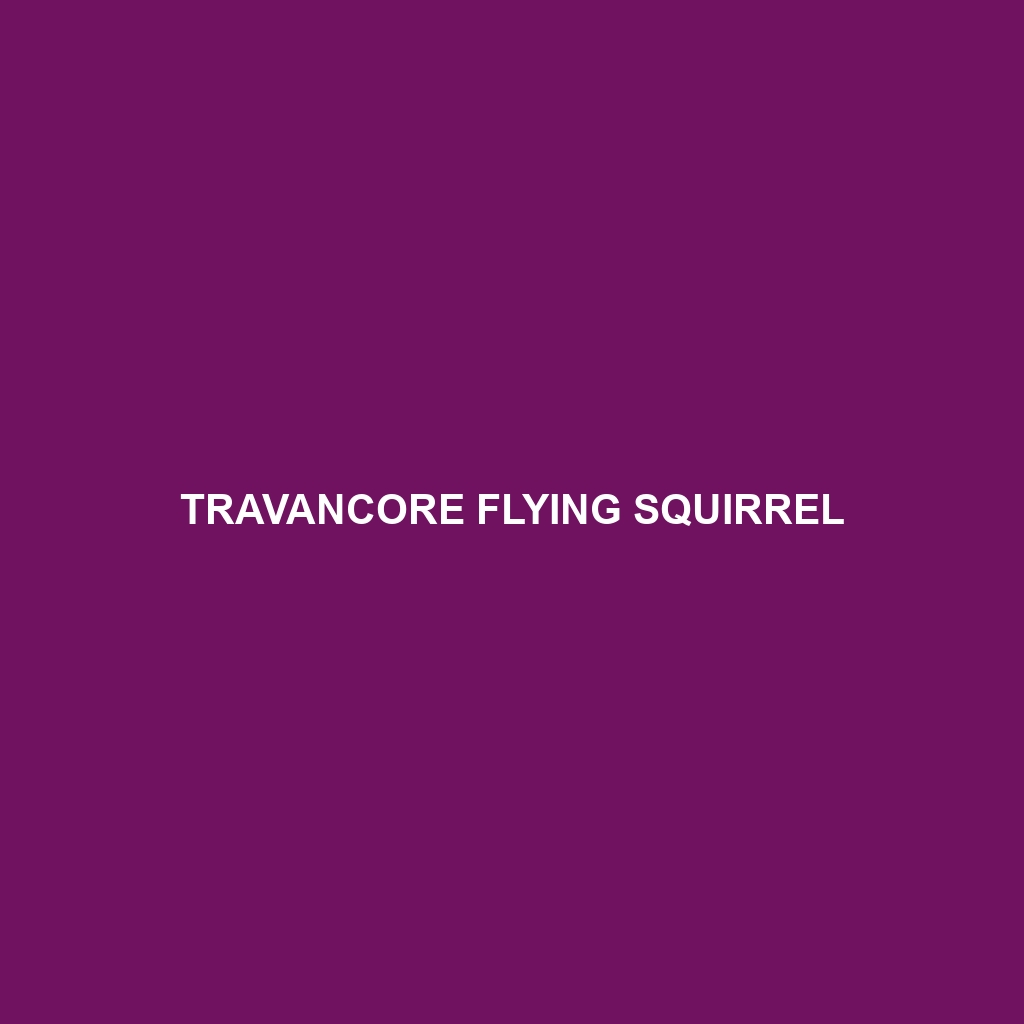Travancore Flying Squirrel
Common Name: Travancore Flying Squirrel
Scientific Name: Petaurista philippensis
Habitat
The **Travancore Flying Squirrel** is primarily found in the moist evergreen forests of the Western Ghats in southern India, specifically in the states of Kerala and Tamil Nadu. This species thrives in high-altitude regions, typically at elevations ranging from 1,000 to 2,000 meters above sea level, where they prefer dense canopy cover that provides both shelter and access to food sources.
Physical Characteristics
The Travancore Flying Squirrel is a medium-sized rodent, measuring approximately 30 to 40 cm in body length, with a tail that can add another 35 to 45 cm to its total length. This species is characterized by its **soft, dense fur** which is predominantly a rich brown or grayish color, complemented by a lighter underbelly. They also possess large, distinctive eyes and a flattened tail that aids in gliding. Notable features include their **membranous patagium**, which stretches from their wrists to their ankles, allowing them to glide gracefully from tree to tree.
Behavior
Travancore Flying Squirrels are primarily nocturnal and are most active during the night. They exhibit fascinating gliding behaviors, using their patagium to traverse gaps between trees in search of food or to evade predators. During the day, they usually rest in tree hollows or nests made from leaves and branches. Socially, they can be solitary or may form small groups, depending on food availability and environmental conditions.
Diet
The diet of the Travancore Flying Squirrel consists mainly of **fruits, nuts, and leaves**. They have a particular fondness for the seeds of various trees, which they skillfully forage from the canopy. Their feeding habits play a crucial role in seed dispersal, contributing to forest regeneration in their habitats.
Reproduction
Travancore Flying Squirrels breed once or twice a year, typically during the warm monsoon months. The gestation period lasts about **60 to 70 days**, after which two to four kits are born. The young are initially altricial, requiring extensive care from their mothers. They begin to glide at about **two months of age** and are weaned by three months.
Conservation Status
The Travancore Flying Squirrel is currently classified as **Endangered** on the IUCN Red List due to habitat loss arising from deforestation, agricultural expansion, and urbanization. Conservation efforts are critical to ensuring the survival of this unique species, as their natural habitats are increasingly threatened.
Interesting Facts
1. Travancore Flying Squirrels are known for their incredible gliding abilities, capable of covering distances of up to **150 meters** in a single leap.
2. This species plays a vital role in maintaining their forest ecosystem through their dietary habits, which aid in seed dispersal.
Role in Ecosystem
As key arboreal mammals, Travancore Flying Squirrels contribute significantly to their ecosystem by helping maintain the **biodiversity** of the forests they inhabit. They serve as prey for larger predators and also influence the growth patterns of various tree species through their feeding behaviors. By facilitating seed dispersal, they contribute to forest regeneration and health, making them integral to their ecological niche.
